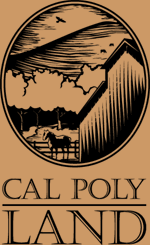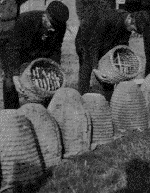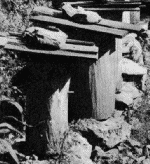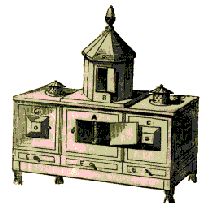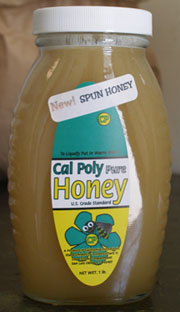|
History of Beekeeping
|
|
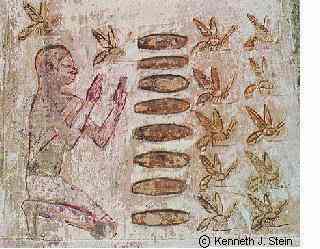 |
|
|
The Beginning "The God Ra wept and his tears fell to the ground and were turned into bees. The bees began to build and were active on all flowers of every kind belonging to the vegetable kingdom. Thus wax came into being, thus was created honey from the tears of the God Ra." The practice of beekeeping began in Egypt in 13,000 BC. You see drawings depicting the woven wicker baskets covered with clay in the Sudan even today. The region of Egypt most known for Beekeeping was Southern Egypt where the symbol for that land was a bee. However, it is thought that even the nomadic Egyptians of the North kept bees as well, they used beeswax in the production of green eye paint for their art ant certain cultural rituals. As a matter of fact, beekeeping is known to be one of the first systems of agriculture. Bees as well as the honey they produced were kept in Temples in order to fulfill the gods' desire for honey. Honey was also used in the production of ointments and medicines. Bees wax was used in the mummification process, boat and ship building, as a adhesive for paints, and in metal castings. History of American Beekeeping Bees are not indigenous to North America. The first bees that landed in North America came from England, the bees were shipped to the Colony of Virginia in 1622. Additional shipments landed in Massachusetts between 1630 and 1633, and it is thought that bees were shipped to New York, Pennsylvania, Carolina, and Georgia during this time. Figure 1
Figure 2
Figure 3
Early enclosures for bees (prior to the middle of the 19th century) were very simple. Some common types of hives were skeps, log gums, and box hives. In these simple shelters, bees attached their wax combs to the hive's roof and walls, just like they do in wild hives. Today we refer to these types of hives as fixed-comb hives. Skeps (Fig.1) were made from straw, and had sticks and twigs inside to provide support for the honey combs. Box hives (Fig.2) were exactly what the name states, simply boxes with hives in them, usually with a crude weight to keep the top on. Log gums (Fig.3) were made from hollow logs with a small wooden plank as a top. Although an obvious advantage to these enclousers was their simplcity, extracting the honey was a very hard task and usually damaged the hives. In the 1800's, the designs became more advanced, and complicated. Beekeepers came up with intelligent designs that allowed them to extract the honey without damaging the hive. One of these early enclosures was called the Nutt Collateral Hive (shown below). Nutt Collateral Hive
Beekeeping during this time was not a commercial practice, but rather privatley owned by familes. These small operations used their hives to produce honey, candles, royal jelly, medicines, cosmetics, and wood polish.
History of Beekeeping at Cal Poly Beekeeping at Cal Poly Started back in the 1950's with the construction of its first building dedicated to beekeeping, the Honey Room. A man named Ralph Vorhies taught a hobby level class to Cal Poly's students who were interested, including the current head of Beekeeping at Cal Poly, Scott Jefferys. After Vorhies, Mark Shelton started to teach the Beekeeping classes. Shelton is the current Associate Dean of the College of Agriculture. Now, the majority of Beekeeping classes are taught by Scott Jefferys, and beekeeping at Cal Poly has gotten pretty big. In 2004, the Beekeeping department got really close to commercial production standards with about 300 hives. Unfortunately, a lot of Cal Poly's hives were lost to a particularly destructive parasite called the Varroa distructor mite. Although this mite in particular has been around Cal Poly campus for the last 15 years, it hit the bee crop hard last year, Now there are 150 hives. There is cause for hope though. The beekeeping operation is investing in getting a certain species of bee called the Russian Bee. The Russian bee has genetic tolerance to the viruses carried by these mites. [This information was provided by Scott Jefferys.]
Cal Poly's History leads to this. [picture taken by Bruce Tanner] |
